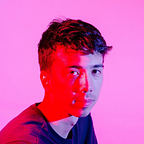“Behind the Scenes” AR Filter
Making visible the terminology of computational photography
This realtime face-tracked filter enumerates a wide range of computational photography techniques that work behind the scenes to make face-tracked filters like this even possible. Computational photography is the object of analysis in this piece, through which I hope to illuminate how images are becoming increasingly processed by computers and further entwined with complex information systems.
The types of computational photography techniques listed range from simple image stacking, to AI-generating, 3D rendering, and image compressing, as well as techniques that utilize special hardware for multispectral capture, microscopic capture (such as protein imaging) and telescopic capture (such as deep astronomical imaging).
The font used to scribe each technique is Windsor, the title font used in the Whole Earth Catalog, a publication first distributed late 60’s. The Catalog was a zeitgeist work at the center of the then counter cultural movement and was used as a veritable Bible of all things environmental and technological. It became a groundwork text for the later dominant cyberculture, as historian Fred Turner argues, for it was widely read by early technologists in California’s Bay Area. The font’s use here represents the manufactured convergence of the environmental and technological landscapes, of which the genre of computational photography is a product of.
Inspired by the work of Zhang Huan and Kerr Cirilo, artists who warped textual artifacts within an image to remediate the text’s original meeting, I hope to remediate the text that is computational photography. By using the labels of the techniques I simultaneously refer to the textual code underlying such techniques as well as refer to the idea of label itself, which is a key feature to computational photography that has been programmed to detect objects and faces within an image frame.
This filter is made accessible on Instagram, owned by Facebook, which is one of the largest aggregators of image-label pairings. It is common knowledge that Facebook sells these pairings en masse for targeted hypergrowth marketing and uses these pairings as a raw dataset to train machine learning algorithms. What is less well known are the particular industry terms, concepts, and techniques that are the intellectual engines to these programs. In a conscious effort of sousveillance it is worth making these terms publicly visible.
To try this filter for yourself you must use a mobile device. Open @tywensnotes in the Instagram app and find the “Behind the Scenes” filter in the filter gallery. The filter tab is indicated by a smiley face on the profile.
